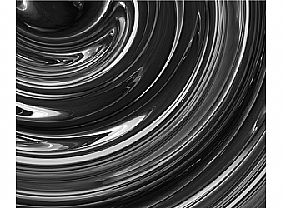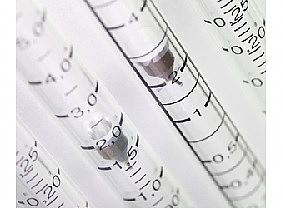מדי זרימה תרמים
Thermal Mass (Thermal Dispersion) Flow Meters and Switches
How they work, where they excel, advantages and limitations.
How
they Work:
Thermal
mass flow meters are also known as thermal dispersion or calometric flow
meters. They operate on the principal that a flow stream produces a rate of
heat transfer, where heat is removed and cooling takes place, that is
proportional to the mass flow of the media. There are two elements to a typical
thermal mass flowmeter, a heating element and a sensing element. The heating
element is cooled by the flow and is detected by the sensing element. This
difference is translated into a flow value.
To
envision how this works, imagine you are standing outside in a t-shirt on a
fall day. There is a light breeze blowing, it’s about 60 degrees and you are
comfortable. Now imagine that the breeze turns into a strong wind. The increase
in the wind speed begins to chill you because your skin is loosing more heat.
This is the same principle that thermal mass flow meters operate on. The
stronger the wind, the less heat you retain. With thermal dispersion
measurement; the more flow, the less able the probe in the flow stream is able
to retain heat.
Advantages:
- Compatible with
many gases
- Can be used for
saturated gases
- Accurate and
repeatable over wide range
- No moving parts to
wear or break
- Less maintenance
- Long operational
life
- Designed for heavy
industrial use
- High flow rate
sensitivity
- High turndown, up
to 100:1
- More economical
than other mass flow technologies
- Unaffected by
changes in pressure, temperature, or density
- Quick reaction
time to changes in flow
- Lower installation
cost, no extra instrumentation needed
- Insertion types
can be used in large pipes
Considerations:
- Primarily used for
laminar-flowing gas in closed systems
- Straight pipe runs
can be reduced using dual plate flow conditioning
- Two styles, insertion
and inline
Examples
of Gases Measured:
- Compressed Air
- Carbon Dioxide
- Argon
- Nitrogen
- Oxygen
- Natural Gas
- Biogas
- Air
Common
Applications for Gas:
- Oil and Gas,
Upstream and Downstream
- Refineries
- Petrochemical
- Powerplants
- Nuclear Plants
- Clean Energy
- Landfill Gas
Recovery, Biogas
- Flare Gas
- Stack or Flue Gas
- Aeration
- Wastewater
Treatment
- Chemical
Operations
- Food and Beverage
- Mining and Metals
- Manufacturing
- HVAC
- Pharmaceuticals
- Marine
- Consumption and
Supply Monitoring
- Leak Detection
- Monitoring
Distribution Networks
- Mixing and
Blending of Gas
- Burner or Boiler
Feed Control
Limitations:
- Calibration is
specific to a particular gas or mixture and accuracy decreases if changed
- Typically for clean,
non-abrasive media
- Media cannot have
moisture or droplets
- Thermal properties
of media must be known
- Initially, the
costs are higher


.jpg)
.jpg)
.jpg)
.jpg)



.jpg)